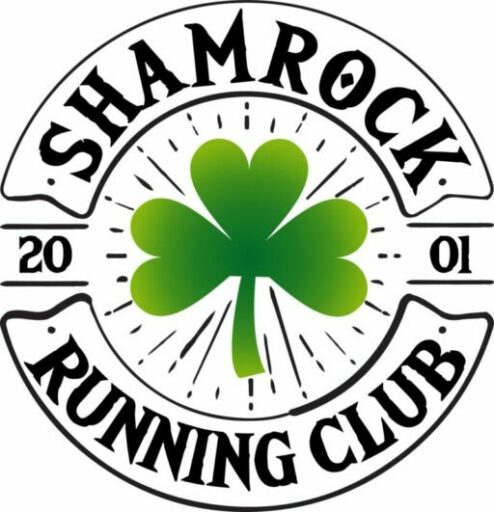As we round the turn into October, we may be in final prep for a fall marathon (like Bay State, Chicago, NYC) or a favorite autumn event.
If you raced a lot in the summer, be aware of any feelings of burnout. It might be a time to return to simple base training to allow your body a chance to recover from the anaerobic demands of interval work and racing.
Q1 Track Workout Tuesday Night Woburn HS
Threshold: Cruise Intervals
Warmup: 1-2 miles E pace plus 4-6 striders
6 x 800-meters at T Pace with 1-minute rests between each
This adds up to 3 miles at T pace (see below for detailed description). We want to adjust the number of reps to your specific T pace so you’re accumulating between 20-25 minutes at T pace — so this might mean you need 5-7 reps depending.
Warm down 1-2 miles
Q2 Fatlek Training
Go by feel for this workout. Ideally, take a break from set intervals on a smart watch and really pay attention to how you feel and go by that.
1-2 mile warmup jog (E pace) plus 4 striders
Spend 30-40 minutes mixing surges and light sprints into your running. Go by feel — have fun with it. The word Fartlek is Swedish for speed play. Take a break from worrying about intervals and enjoy a mix of running speeds.
1-2 mile warm down jog at E pace
Q3 Long Run at E pace
A long run at E pace (see below) that is roughly 25% of your weekly training volume.
Fill the rest of your week in with easy runs, cross-training and/or strength training.
TRAINING INTENSITY DESCRIPTIONS
“I Pace” (VDOT) Interval Pace
“I-Pace” aka interval pace workout. It’s a “hard” effort that you can typically sustain for about 10-15 minutes. This is the pace you would use in races like the 2-mile, up to a 5K race. I-pace is designed to improve your aerobic capacity (VO2 max). By improving your VO2 max, I pace training develops your body’s ability to supply oxygen to muscles during a race. This means you can sustain a faster pace for a longer period of time. I pace workouts feature tightly controlled rest periods. These workouts are also build mental toughness and race confidence.
“T-pace” (VDOT Threshold Pace)
This is a “comfortably hard” pace that you could theoretically sustain for about 60 minutes in a race. It’s hard enough that holding a conversation with your training partner is not an option outside of occasional short sentences. T-pace is in the range of your 10k race pace. It’s meant to improve your body’s ability to clear lactate, allowing you to run faster for longer periods. The 10K race pace is the most common equivalent. T pace workouts are also another mental toughness builder.
“R Pace” (VDOT Repetition Pace)
The main goal of R pace is to improve your running form, speed, and efficiency. By running short, fast repeats with relatively long rest periods, you train your body to be more economical at faster speeds. It is not meant to be a cardiovascular workout.
The recovery period between repetitions is long, allowing for almost full recovery. If your heart rate has not dropped below 130 you need more rest before the next rep. This is crucial for ensuring that each repetition is performed with high quality and good form.
R pace is not tied to a specific race distance but is a very high intensity. This is fast running, pure and simple.
The R pace workout helps a runner improve their ability to run faster with less effort, which translates to better race performance at all distances — from the mile to the ultramarathon. Imagine the cumulative improvement a marathoner or ultrarunner gains when they improve their efficiency in a single stride, even just a fraction. A 3-hour marathoner (on average) takes 55,000 steps in a marathon race. Even a microscopic improvement in efficiency x 55,000 can make a major difference in your performance.
“M Pace” (VDOT Marathon Training Pace)
M pace workouts appear in the VDOT half-marathon and marathon training plans. A “race simulation” pace. Typically built into longer sessions, it is used to get the runner accustomed to the specific pace and conditions of a marathon race and/or your projected goal race speed. M pace is a moderate pace, generally in the range of 75-84% of VO2max or 80-90% of a runner’s maximum heart rate. The main goal is psychological—to build mental confidence at race pace. It’s a great opportunity to test and practice drinking and fueling strategies that you’ll use in a long race. One of the primary physiological benefits is improvement of muscle glycogen economy and shifting energy needs toward fat metabolism. While muscle glycogen storage is limited, even a skinny runner has ample amounts of fat to burn in a race — so the more you can rely on burning fat for fuel, the less likely you ram into “the wall.” — The wall being the point in time when muscle glycogen stores are exhausted and you “bonk.”
“E Pace” (VDOT Easy Pace)
This is the pace you use for the build of your training, including warmup and recovery runs that bracket speed workouts. It’s a comfortable pace where holding a conversation with a running partner is no problem at all. Physiologically, it typically falls around 60 to 70% of your maximum heart rate. The primary goal of E pace is to improve your aerobic capacity and endurance. It strengthens your heart and helps your body become more efficient at using oxygen. Specific benefits include enhancing the body’s ability to burn fat for fuel, increasing the number of capillaries and mitochondria in muscle tissue, and improving muscle glycogen storage. It also plays a crucial role in strengthening the musculoskeletal system and in particular connective tissue, which helps prevent injuries.
